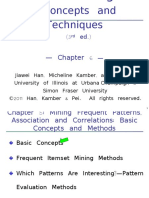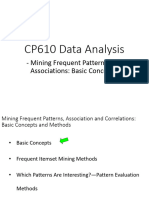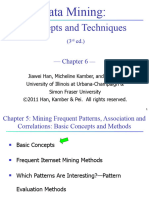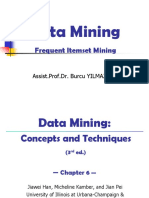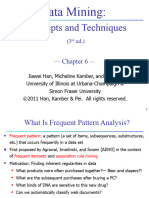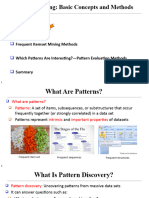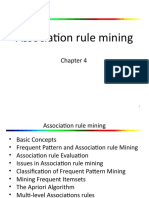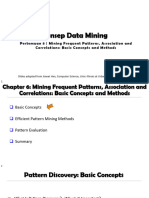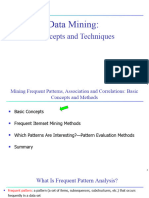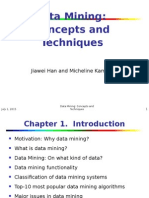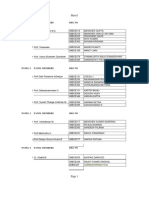0% found this document useful (0 votes)
28 views25 pages15mining Freq Patterns-Part1
The document discusses frequent pattern analysis, focusing on mining frequent itemsets and association rules. It covers basic concepts, methods like Apriori and FPGrowth, and the computational complexity involved in frequent itemset mining. The document also highlights the importance of evaluating interesting patterns and improving the efficiency of mining methods.
Uploaded by
Nedia Ben AmmarCopyright
© © All Rights Reserved
We take content rights seriously. If you suspect this is your content, claim it here.
Available Formats
Download as ODP, PDF, TXT or read online on Scribd
0% found this document useful (0 votes)
28 views25 pages15mining Freq Patterns-Part1
The document discusses frequent pattern analysis, focusing on mining frequent itemsets and association rules. It covers basic concepts, methods like Apriori and FPGrowth, and the computational complexity involved in frequent itemset mining. The document also highlights the importance of evaluating interesting patterns and improving the efficiency of mining methods.
Uploaded by
Nedia Ben AmmarCopyright
© © All Rights Reserved
We take content rights seriously. If you suspect this is your content, claim it here.
Available Formats
Download as ODP, PDF, TXT or read online on Scribd
/ 25
